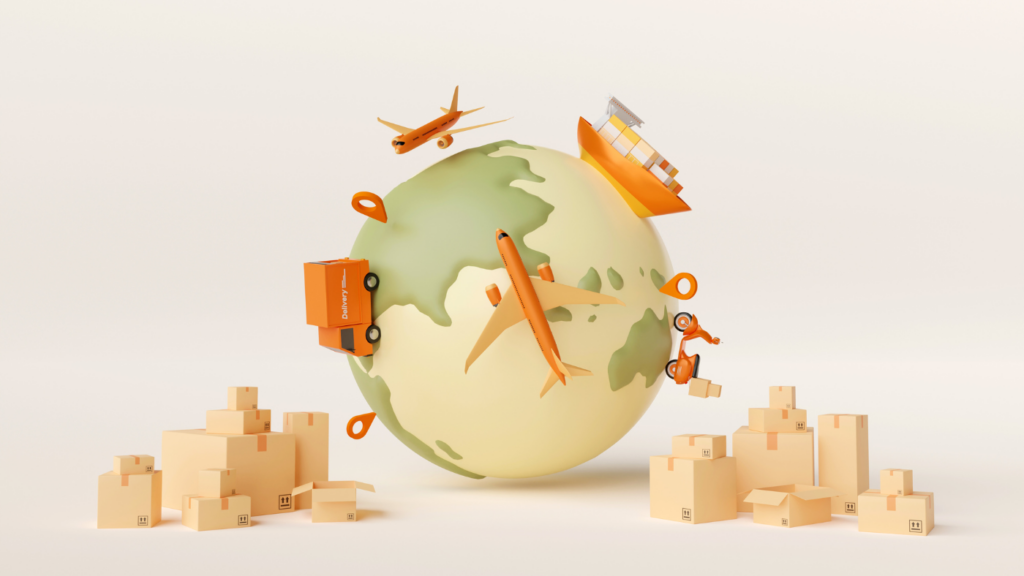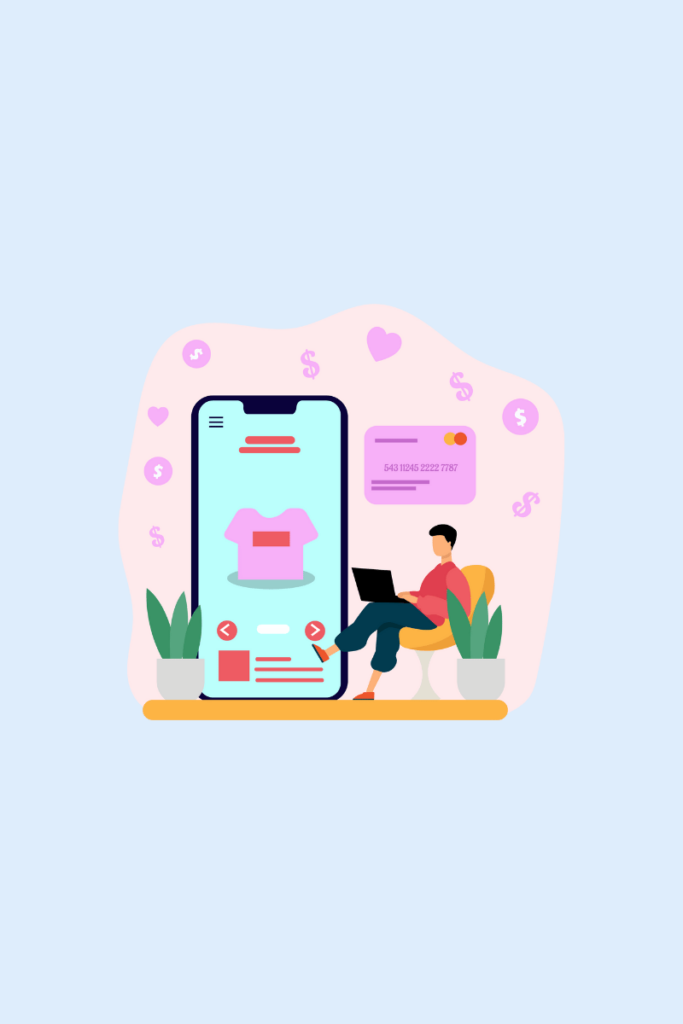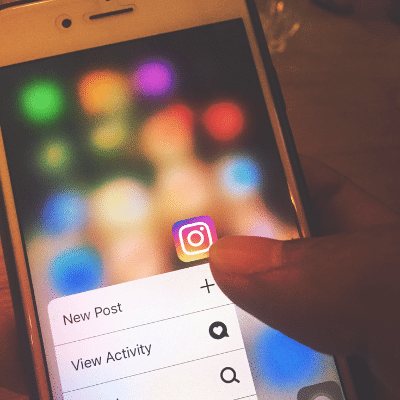Linguist Spotlight Round-Up
Over the past month, we’ve been shining the linguist spotlight on some of the incredible freelance linguists who make our work possible!
From Mandarin to Friulian, software to fine art, and funny phrases to heartfelt career stories, our linguist spotlights have given us a behind-the-scenes look at the people, languages and lived experiences that shape high-quality translation.
A truly global community
One of the most inspiring things about our freelance network is its diversity. Over the course of one month alone, we heard from linguists based in France, Italy, China, Spain and beyond – each bringing their own cultural insight and linguistic nuance to the table.
Their specialisms ranged from luxury marketing to technical translation, indie games to academic research. And yet, they all shared a deep passion for language, communication and connection.
The paths that brought them here
Every linguist has a story. Echo started out tutoring English before going full-time as a freelance translator (while pregnant with her second child!). Mercedes got her start subtitling films in London. Basel was inspired by his mother’s English teaching, and Laura returned to translation after exploring several other roles.
Whether they stumbled into the profession or pursued it with purpose, one thing’s clear: being a linguist often means carving your own path.
Thoughts on the future
It’s no surprise that AI and machine translation came up more than once. While opinions vary, our contributors agreed on one thing – the future of translation lies in balance. Technology is here to stay, but human creativity, empathy and cultural know-how will always matter, especially in fields where nuance is key.
Favourite phrases and language quirks
We couldn’t wrap up without sharing a few more of our favourite linguistic gems…
- From Arabic: تقبرني (taqburni) – “May you bury me.” A dramatic but affectionate way of saying “I love you so much I can’t bear to live without you.”
- From Spanish: Estar en la edad del pavo – “To be in the turkey age.” A very visual way to describe the awkwardness of adolescence.
- From Chinese: 啊,真香!(ā, zhēn xiāng!) – “Ah, this smells/tastes so good!” A viral expression used when someone ends up loving something they initially refused.
- From Friulian: No varìn migo di lassâsi come cjans? – “Are we really going to part like dogs?” Perfect for persuading your friends to stay for one more drink.
Thank you!
We’re so grateful to all the linguists who took the time to share their stories with us this month. Whether you’re a client, a fellow translator or just curious about languages, we hope you’ve enjoyed getting to know the people behind the words.
Don’t worry if you missed our linguist spotlight posts – you can head over to our LinkedIn to check them out!
We love working with amazing linguists from all over the world. Got a translation project coming up? Contact us – we’d love to work with you!
Linguist Spotlight – 25th April 2025
For our final linguist spotlight post of the month, we’re shining a light on four more of our fantastic freelance linguists: Basel, Laura, Echo, and Mercedes. Working across Arabic, Italian, Chinese, Spanish, and more, their stories remind us of the passion and precision behind great translation. Read on to hear about their career journeys, language tips, and some of their favourite cultural quirks.
Basel
Basel is a talented Arabic linguist who translates both from and into English. His areas of expertise range from fine art and history to social media and marketing. A lifelong language enthusiast, Basel traces the roots of his career back to his mother, an English teacher. “From a young age, I saw her speaking English and thought – I want to do that too. It felt like opening a door to the world.”
When he first moved to France, Basel tackled a new linguistic challenge: French. “When I first arrived, I started listening to podcasts and TV in French, even if I didn’t understand much. With help from my teacher and some personal effort, I now understand almost everything!”
Asked about the future of the industry, Basel sees a hybrid path ahead. “The industry is moving towards more collaboration between human linguists and technology. Machine translation is widely used, but those who want quality content increasingly understand the value of human input.”
Fun facts from Arabic:
- Hard to translate? Popular sayings and socially constructed mottos are very difficult to render well in English.
- Interesting language fact: Arabic uses so many prefixes and suffixes that a single word can form a complete sentence. For example, كتبتها means “I wrote it”.
- Funny phrase: تقبرني (ta’burni), common in the Levant, literally means “may you bury me”, but is actually an affectionate phrase expressing deep love – often from mothers to children.
Laura
Laura is a multilingual translator based in the UK, working mainly between English and Italian, with a soft spot for websites. She also translates from Russian and has a background in German. Her real mother tongue? Friulano – a Romance language spoken in the northeast of Italy. “It’s still my favourite language of all.”
Laura has had an inspiringly flexible career. “I’ve been a translator, interpreter, admin assistant, PA, business analyst… and translator again! I’m proud of being able to adapt to change, try new things, and reinvent myself.”
When it comes to the difference between translation and interpreting, Laura says: “Interpreting is fast-paced and demands quick thinking. You need to be good at letting go – you can’t beat yourself up for not thinking of a better phrasing on the spot. With translation, you have time to research and refine.”
Her advice for language learners? “Expose yourself to the language as much as possible, especially through things you enjoy like films and TV. And once you’re in the country, don’t worry about making a fool of yourself!”
As for the future, Laura offers a thoughtful perspective: “I probably wouldn’t pursue a translation degree in today’s climate. I’d recommend specialising in another field, and adding languages as a valuable extra.”
Fun facts from Italian (and Friulano!):
- Hard to translate? The word simpatico doesn’t quite translate – it means someone who is pleasant, funny, and nice all in one. Russian has a similar word, симпатичный (simpatichnyi), which can mean cute or nice.
- Funny phrase: In Friulian, at the end of a night out, you might say No varìn migo di lassâsi come cjans? – “Are we really going to part like dogs?” It means: one more drink before we go!
Echo
Echo has been a freelance Mandarin and Cantonese translator since 2009, working on everything from luxury branding to government initiatives. Based in China, she’s a native speaker of both Mandarin and Cantonese and specialises in creative, culturally sensitive content.
Her language career began with online tutoring in 2006. “Eventually, I offered editing and translation services too. One client, Dallas, became a regular and kindly introduced me to a whole network of freelance translators. (He’s now known as the brilliant mind behind GT4T!)” With regular work and a growing family, Echo made the leap to full-time freelancing in 2009 – and hasn’t looked back since.
Echo has interpreted once – “at a trade fair in Germany, back in 2017” – but prefers translation, which lets her work at her own pace. “Both require preparation and creativity. But interpreting, especially live, is definitely more challenging for me!”
For language learners, her advice is simple: “Immerse yourself daily – listen, speak, and watch things slightly above your level. Don’t be afraid to make mistakes. I’ll take this advice myself when I finally try to learn French again!”
Looking ahead, Echo sees technology playing a bigger role. “AI tools will grow in use, but human translators will remain essential for capturing nuance and cultural depth.”
Fun facts from Chinese:
- Hard to translate? 缘分 (yuán fèn) – a concept of fated connection. There’s no exact English equivalent.
- Interesting language fact: Written Chinese is logographic, so it remains consistent across dialects even if spoken Mandarin and Cantonese are very different.
- Funny phrase: 啊,真香! (ā, zhēn xiāng!) means “Ah, this smells so good!” It’s used humorously when someone changes their mind and ends up loving something they originally rejected – a bit like “Okay, fine, I actually love this!”
Mercedes
Mercedes is a freelance translator and editor working between German, English and Spanish (Spain). She specialises in software localisation and technical translation – and she loves diving into all things tech.
She got her start in subtitling, translating film and TV in London, before joining a language services provider as a project manager. “The most rewarding part of my job has always been meeting people from all over the world and learning about such a wide range of topics.”
If she could instantly master another language? “Chinese – without a doubt. It’s so commercially relevant, and I’d love to be able to connect with that part of the world.”
Her advice for language learners is refreshingly simple: “Don’t feel silly. Own your mistakes and have fun. Enjoying yourself is half the battle.”
Mercedes sees a future where machine translation and AI are the norm, but not the whole story. “There will still be a real need for human insight – especially in areas like medtech, marketing and indie games. Clients who value cultural nuance will keep turning to real people.”
Fun facts from Spanish:
• Hard to translate? Estar en la edad del pavo – literally “to be in the turkey age”! It’s used to describe that awkward, emotional teenage phase when you’re figuring everything out.
• Funny phrase: Estar como una cabra – “to be like a goat”. It means someone’s acting totally wild or silly… in the most entertaining way!
We’re incredibly proud to work with such talented, passionate linguists from around the world. Need help with your next translation project? Get in touch – we’d love to hear from you.
Linguist Spotlight: 18th April 2025
This week, we’re shining the linguist spotlight on three more brilliant linguists who bring curiosity, cultural sensitivity, and a love of language to every brief. Whether they’re translating complex IT materials or marketing content with a twist, these professionals are passionate about delivering work that truly resonates.
Eduan
Meet Eduan, a Brazilian Portuguese freelance translator and reviewer with a specialisation in technical content, IT, gaming, and general texts. With a background in computing and a flair for language, Eduan helps businesses communicate with clarity and natural fluency across borders.
His journey into translation started at the Federal Institute of Education, Science and Technology of Rio Grande do Sul (IFSUL), where he studied computing. Over time, his interest in English grew – and as his language skills deepened, he discovered that translation was the perfect blend of his tech background and creative side. He now balances technical expertise with linguistic finesse, and is currently adding Japanese to his repertoire after spending two years living in Tokyo.
When asked what a typical day looks like, Eduan says experience has made the work flow smoothly – “as long as the client provides the correct instructions, it’s just fun!”
Looking ahead, Eduan sees AI as a helpful ally in streamlining workflows and boosting productivity. But for him, the heart of good translation still lies with the human touch: “AI can assist, but it can’t replicate cultural sensitivity or context. It’ll keep evolving, but humans are still essential for tone and quality.”
Eduan also shared some fun language facts and experiences:
- A phrase that doesn’t translate well: Ficar com a pulga atrás da orelha – literally “to have a flea behind your ear,” meaning to be suspicious.
- An idiom that makes no sense in English: Chutar o balde – literally “kick the bucket,” but it actually means to give up or go wild.
- Ever mixed up languages? Not really – Eduan keeps things pretty clear, though gaming lingo sometimes sneaks into his everyday speech!
Ingrid
Say hello to Ingrid, a French linguist who translates and reviews from English into French, with a special focus on IT, marketing, and medical content.
Ingrid’s linguistic journey spans continents – from studying in Australia to completing her PhD in the US. After returning to France, she taught English for three years before deciding that the classroom wasn’t quite her calling. Wanting more flexibility and independence, she made the leap into freelancing – and quickly found her feet as a professional translator.
While Ingrid primarily focuses on technical and marketing texts, she occasionally receives more unexpected assignments. One particularly memorable project involved translating a website for adult products – “quite… interesting and fun!” she recalls.
Her tool of choice? SDL Trados Studio. “It’s not as popular as it once was,” she says, “but to me, it’s still the best.”
Like many in the field, Ingrid has noticed changes brought on by AI. “It’s actually rather scary. Workloads have decreased, and tools like DeepL are very strong. But I still believe machines will never fully replace human translators – there’s a touch of nuance and emotion they just can’t reach.”
Ingrid’s favourite language quirks include:
- A word she loves: Her children’s names – Loé (Hawaiian) and Miyo (Japanese). “They’re not French at all – the names, not my kids!”
- A beautiful untranslatable: Komorebi – the Japanese word for sunlight filtering through trees.
- Ever mixed up languages? “No, I don’t think so!”
Yinli
Meet Yinli, a Simplified Chinese linguist who works across technology, science, and the humanities. With a uniquely reflective perspective, Yinli brings insight and precision to every project she takes on.
Her path to linguistics is rooted in a broad academic background – one that she sees as more connected to her work than it might appear on paper. “I don’t see myself limited to a single discipline,” she says. For her, translation is less about rigid definitions and more about exploring the layers of meaning within and between languages.
Every project, she explains, offers a chance to gain new distinctions – both technical and philosophical. Her most trusted resources? “My old friends: paper dictionaries.”
On the future of translation, Yinli offers a poetic take: “AI can help gather symbols and their outer layers, if that’s what we’re looking for. But language is more than form – it’s about resonance.”
Here are a few of her favourite thoughts on language and culture:
- A word she loves: “Brett” – “A beautiful name for a beautiful one.”
- A unique insight: “It feels as though we grow into the language that precedes us, into every word and expression, finding our place within.”
- Ever mixed up languages? “Yes, especially while typing. Different pronunciations from various languages can trip me up sometimes.”
Come back next week for more linguist spotlight content from our incredible linguists! Curious about working with our team? We’d love to hear about your project – get in touch for a quote today!
AI Translation and Website Localisation: How Open-Source Models are Transforming the Industry
Recently, Tradutor, an AI translation model, was developed to enhance European Portuguese localisation. In the rapidly evolving world of AI translation, advancements like this are continually improving accuracy and usability for businesses. Open-source models like Tradutor are expanding language access, particularly for niche or underrepresented languages, creating exciting new opportunities for website localisation. But what does this mean for businesses looking to localise their websites effectively?
Tradutor AI: A Game-Changer for European Portuguese
Tradutor is a ground-breaking AI translation model, specifically developed for European Portuguese. Historically, businesses have faced challenges in finding high-quality machine translation (MT) options for this language variant, which differs significantly from Brazilian Portuguese in vocabulary, grammar, and cultural nuances. This is where Tradutor steps in.
Developed to address these very challenges, Tradutor offers a more culturally and linguistically accurate translation than generic AI models. This advancement signals a significant shift in the AI translation landscape, expanding and improving language coverage, and delving into regional language variants with a level of precision that was previously difficult to achieve.
As AI continues to evolve, tools like Tradutor are making it possible for businesses to create more engaging, accurate, and cost-effective multilingual websites. However, it’s important to remember that while AI can improve speed and scalability, human input remains essential for ensuring cultural and linguistic accuracy.
AI & Website Localisation: A Perfect Match?
AI-driven translations are undoubtedly transforming website localisation by speeding up workflows, making it easier and faster to cater to a global audience. However, AI alone cannot guarantee the success of localisation efforts. Human expertise is still crucial when it comes to ensuring that the translations resonate with local audiences, capturing cultural context, and providing an authentic user experience. This is particularly significant, as studies show that consumers are far more likely to purchase a product or service when the website is presented in their native language.

Custom AI models, like Tradutor for European Portuguese, can enhance regional accuracy, ensuring that website content is tailored to the specific dialect and cultural preferences of the target audience. This is particularly important when dealing with markets that have distinct linguistic differences, such as the various Portuguese-speaking regions, like Portugal, Brazil, Angola and Mozambique.
For businesses targeting these diverse markets, the key to success lies in recognising the linguistic and cultural nuances between different Portuguese-speaking regions. Customised AI models for specific variations make website content more relevant and engaging, enhancing customer experience and brand perception.
The Future of AI in Localisation
Looking ahead, AI will continue to improve, and its role in localisation will only grow. However, AI models must be context-aware and tailored to specific industries and languages to truly meet the needs of businesses. This is where open-source initiatives like Tradutor can play a pivotal role. They allow companies to customise translation models to suit their requirements, ensuring that the translation process is more aligned with business goals and localised needs.
AI is undeniably a powerful tool for localisation, offering significant benefits in terms of speed, efficiency, and scalability. However, to achieve success in website localisation, businesses must combine the power of AI with the expertise of professional translators. By embracing AI advancements while ensuring cultural relevance in their localised content, companies can create more engaging, accurate, and cost-effective multilingual websites.
As AI models continue to specialise and improve, businesses will have more opportunities to leverage these technologies to enhance their website localisation efforts. With the right balance of AI and human input, the future of localisation looks brighter than ever.
At Web-Translations, we specialise in website localisation. Contact us today to find out how we can enhance your multilingual website!
Translation as a Journey: The Path From One Language to Another
Translation is more than just swapping words between languages; it’s a journey where each stage represents a different part of moving from the source language to the target language. After all, the Oxford English Dictionary states that the word translation can also be used to describe moving an object from one place to another.
Understanding the Terrain
The journey starts with deeply understanding the source text, much like studying a map before setting off. This involves grasping not just the words, but the cultural and contextual nuances that will guide the translation.
Charting the Course
Next comes planning the translation strategy, deciding whether to stick closely to the original or adapt it more freely. This stage is like choosing the best route on a trip, ensuring the message travels well to the new language.

Embarking on the Journey
The translation process itself is where the text moves from one language to another. The translator carefully navigates linguistic and cultural differences to ensure the final product is fluent and accurate.
Overcoming Obstacles
Challenges like untranslatable words or cultural references are the rough patches on the journey. Translators must creatively solve these issues, ensuring the translation remains true to the original while making sense in the target language.
Reaching the Destination
The journey ends with reviewing and refining the translation, much like a traveller reflecting on their trip. This final step ensures the translation is polished and ready for its audience.
Reflecting on the Journey
Just as experienced travellers make for better journeys, professional translators bring the expertise needed to navigate the complexities of translation, ensuring the final text is accurate and culturally appropriate.
In essence, translation is a complex journey requiring skill, planning, and adaptability to successfully convey a message across languages and cultures.
If you think translation might be the best next step in developing your website or business, contact us for a quote today!
The Need for Translation in an International Market
In this post we will be discussing the need for translation in an international market. As the world becomes increasingly interconnected, it is becoming more and more necessary to have your business accessible in a variety of languages. Imagine going to browse a website only to find that you can’t find the information you need because it’s not in your language – it would be pretty frustrating!
If you want to send your business into the international sphere, you need to be able to appeal to an international audience, but there is no such thing as an international language. You can’t assume that your clients will understand English. Nor can you expect your customers to put all of the information they need into online translation software. Often it won’t be accurate and will create a barrier between you and your clientele.
In the sales process, you want to avoid creating obstacles between your customers and their products.
So where do I start?
Once you’ve established your target market country, your best bet is to contact a translation or localisation agency to ask them to work with you to produce the most accurate and appropriate webpage in the target language.
This of course, costs money, so it is important to weigh up the risk vs. benefits of this investment. There are ways to mitigate the cost too: for example, common website features, like a page to check out a purchase, use similar, if not the same language. In some cases, this is a potential candidate for machine translation, which is often cheaper. Machine translation, however, won’t quite cover all situations.

So when can’t I use MT?
Machine translation can’t take into account the context of the translations – see our post on this here. In addition, most machine translation software doesn’t account for regional language variants. For languages like Spanish where there are such a wide range of dialects across the globe, the language will need to be translated differently for each as different terminology is used.
To summarise, having your website and products translated into the target language can improve international connections and give your customers a better impression – after all, if the customers can see the effort you put into making the website easy for them to use, they are much more likely to have a better impression of your business.
Follow us on Twitter, Facebook and LinkedIn for more translation updates and news!
How Translation Audits Can Benefit your Business
At Web-Translations we offer a comprehensive translation audit service, but what exactly does that entail? Let’s take a look at how our audits work and why they’re a valuable investment for you and your business.
What is a translation audit?
A translation audit involves selecting various sections of a document or website and asking a native linguist to review them. This is done in order to ensure that your translations have both high quality and fluency. During this process, the translator provides detailed feedback on multiple aspects of your text, including fluency, word choice, grammatical accuracy, and overall coherence, ensuring your content meets the highest standards.
Why invest in one?
Ensuring that your customers feel acknowledged and catered for is absolutely essential. Errors in your website text can negatively affect customer perception. This in turn can make them feel that you’re not putting in the necessary effort. By accommodating foreign language customers, you can expand your business and make your existing customers feel truly appreciated.
The statistics back this up too. According to the CSA, 76% of customers prefer purchasing products with information in their own language. Furthermore, their research shows that 75% of respondents are more likely to buy from the same brand again if customer care is provided in their language. Clearly, catering to your customers’ language preferences can significantly enhance their experience and boost your business.
Who is it right for?
If your company has relied on Machine Translation in the past, investing in a translation audit can be incredibly beneficial. It’s a smart move to ensure your website meets the highest standards of accuracy and quality. With a thorough review by native linguists, you can identify and fix any issues, making sure your content truly resonates with your audience and reflects your brand’s professionalism.
Our audits can also help you check if your previous translations are up to scratch. Even if they were completed by a professional linguist! This can ensure that your translations are accurate and up to date – after all, translators are only human!
How does a translation audit work?
There are 3 main steps to a Translation Audit
1. Initial Review: Once you choose your audit plan, you’ll provide us with the specific pages you want reviewed—whether it’s top-level web pages or more detailed content. We then distribute these to our team of native linguists who assess the quality and accuracy of your texts.
2. Checks by Native Linguists: Our skilled native linguists thoroughly check your content, proving detailed analysis and insight into improvements they suggest. This ensures that every nuance and detail is spot on.
3. Feedback and Refinement:
If No Errors are Found: If everything is perfect and no changes are needed, great! Your text stays as it is, and you can be confident that it’s performing well.
If Changes are Required: If there are any issues, we’ll work with you to refine and correct your texts, making sure your publications are polished and effective.
Investing in a translation audit guarantees that your content is of the highest quality, significantly enhancing your credibility and strengthening your connection with your audience. By ensuring your texts are accurate, fluent, and culturally appropriate, you demonstrate a commitment to excellence that resonates with customers and sets your brand apart.
If you think a Translation Audit might be the best next step in developing your website, contact us for a quote today!
Breaking into the International Market? Here are some pointers!
Breaking into the international market comes with several challenges: different regulations, time zones, and language barriers. But maybe your business has a reached a point where you feel ready to take the leap. Here are some tips:
How?
Moving your business into the international sphere takes careful planning and preparation.
Depending on the countries you choose to expand into, there are different factors you need to consider for each, including your customers’ language or language variant, their time zone, and their culture.

You will likely need to adapt your website beyond just translating the language. This process is called localisation, where the content is adapted to meet the cultural norms of the target audience.
It is also necessary to know the business culture and set up in your target country as each one will work slightly differently. For example, in the UAE, some businesses may require a partner local to the country due to regulations.
Why make the effort?
Thanks to digitalisation and increased internet usage, it’s as easy as ever to cross borders in seconds from the comfort of your own home.

By breaking into the international market, you allow your business to reach new markets, and therefore, new customers. This should boost sales! According to the Harvard Business Review, brands that have localised sales content are 1.5 times more likely to make a profit than businesses that don’t! It also provides your company with a competitive advantage. If you can send what the customer wants to their country, of course they’re going to choose you over a company that can’t. In addition, CSA Research reports that if aftersales services are offered in their native language, 75% of consumers are likely to consider purchasing from the same brand again.
In short, to successfully expand into a new country, you need to understand your new client base, what their likes and dislikes are, and any cultural taboos to avoid! You wouldn’t want to sell wine in a country whose culture frowns upon consuming alcohol!
At Web-Translations, we can help you translate your website to grow your business internationally. Read some of our testimonials here, and see how we’ve helped other businesses. Contact us with any queries you have!
Social Media Translation: Challenges and Solutions
We all know how important social media is in today’s society. Your social media platform and website is your online shop window – a way to attract customers to find out more. However, many businesses only write their content in their native language. Translating social media content does however have its challenges. After all, adapting and launching your product or service in another country is a huge task. In this blog, we’ve highlighted some of the challenges that you may face but also some suggestions that may help you overcome them too.

The Challenges
Culturally Appropriate
It’s important to ensure your content is suitable for the target audience. This is particularly important for brand names and slogans, but also for images. We have seen some translation mishaps when dealing with brand names. For example, Mercedes-Benz attempted to enter the Chinese market using the brand name ‘Bensi’. This was a shortened brand name to suit the Chinese market, but unfortunately it translates to ‘rush to die’. This is certainly not something that you want to associate with your brand and was damaging for their reputation. On the other hand, a good example of translating a brand name is Carrefour’s for the Chinese market (家乐福 ). This translation relates to the pronunciation of Carrefour, but it also means ‘a family being very happy when shopping in the supermarket’.
Platform
There are various platforms that are used globally, so it’s certainly worth looking into these before making this decision. The different platforms have their own rules and ways of communicating. Facebook is predominantly text, but Instagram is full of images and videos. This means that the images would need to be culturally appropriate and tailored to the country’s audience. In this survey, ‘72% of consumers now say they only engage with marketing messages tailored to their interests’.
It’s also a good idea to subtitle your videos if there is dialogue, so that they are accessible globally. It’s not just the format, that varies, it’s also the length of content. LinkedIn allows you to share long, in-depth content, but Twitter has a very short character limit. This character limit makes it difficult to translate into language that expand during translation. English into French translation for example expands by 25%.

SEO
Translating your content helps you to reach your international audience, but if it’s not Search Engine Optimised, few people will actually see it. There is a huge amount of content shared on the internet every minute of every day. To put this into perspective: 95 million photos and videos are shared on Instagram each day, translating to 65,972 each minute! This is why it’s important to optimise your content. You may already optimise the content in your native language, but the same also needs to be done to your multilingual content. This is where we come in. Translating keywords isn’t as simple as finding the equivalent meaning in the target language. For example, in English you may use ‘houses to buy’, but when translating into German for example, ‘apartments to rent’, as this would be a cultural difference.
It’s a daunting task adapting a brand for another target audience, but it’ll make your audience feel valued. This, in turn, will increase your sales conversions since consumers feel more comfortable purchasing in their own language. We are experts in translation, so we can help protect your global reputation. If you’re interested in localising your social media content but are unsure if on the best way forward, feel free to get in touch and we’d be more than happy to offer our advice!
Social Media Translation: Things to Consider
We all know how important social media is in today’s society. After all, your social media platform and website is your online shop window – a way to attract customers to find out more. However, many businesses only write their content in their native language. But what about your international audience? They need to feel valued too. In fact, 57% of consumers will increase their spending with a company when they feel valued, and 76% actually choose to buy from them over a competitor. And this is where social media translation comes in!
Social media can be difficult to use at times with the various platforms and their immediacy. This makes translating your content into various languages more challenging. But we’re hoping that this blog will make it easier to navigate within the world of social media and reach out to your international audience.
Why is Social Media Important for Business?

Social media influences a lot of our purchasing decisions without us really realising – from paid ads to influencers. Your online presence allows customers to view your products and services 24/7 from the comfort of their own home, on the train and even during their coffee break. 57% of people say that social media influences their shopping decisions, so why not make the most of this as a business. Trading globally has never been easier!
Tips for Social Media Translation
It’s important to really consider who your audience are before translating your social media content. Below are some points to consider:
- Which languages to translate into? It’s important to consider where your product or service is performing/ would perform the best. From here, you can determine the language variant. For example, if you want to target Latin America, you can specify whether you want to use Mexican or Colombian or an alternative Spanish variant.
- What interests them? It may be necessary to adapt your product to be more appealing to your target audience’s interests and culture.
- Which platform is most suitable to your target countries? In North America and Europe, LinkedIn is used more, but in Latin America, it’s Facebook. So it’s certainly worth looking into this to reap the most rewards from the translations.
- What format would your audience react best to and what tone do they prefer content to use? Maybe an e-book or a video? Do they prefer a direct tone or maybe something with a little more emotion?
It may seem like a lot to consider when translating social media content, but it’ll make your audience feel valued. This, in turn, will increase your sales conversions since consumers feel more comfortable purchasing in their own language.
If you’re interested in social media translation but are unsure on the best way forward, feel free to get in touch and we’d be more than happy to offer our advice!
Lifting the Lid on Subtitles
Have you watched films and TV shows in a foreign language? Do you watch videos on mute? Then you’ve probably already experienced subtitles. They are the on-screen text that allows viewers to read what is being said.
Sometimes, businesses choose to use automatically generated subtitles. However, at Web-Translations, we advise opting to get your videos professionally subtitled. We’ll explain why during this blog.
How are professional subtitles created?
Once we’ve received a video file, we will send it off to our professional linguists to be transcribed. This ensures that the audio is understood correctly, consequently avoiding any errors. On auto-generated subtitles, this is a common issue, as, unlike humans, machines are unable to differentiate homophones. This results in mistakes.
This template will be translated into the chosen languages, and subtitles are then created. Our experienced subtitlers will translate and time-code them considering the appropriate guidelines. They will consider:
- Reading speed
- On-screen text
- Character limits
- On-screen action
- Clarity – the removal of any unnecessary hesitations
- Subtitle lines and positions
By considering these guidelines, your subtitles will look professional. They will also be appropriate for your audience. By investing in the subtitling process, mistakes will be avoided and your customers will notice that you care about them.

Investing in professional subtitles shows your customers that you’re investing in them.
Why use Web-Translations, and not auto-generate them?
Auto-generated subtitles are cheaper, but the cost is shown by the quality. If the subtitles are too fast and your audience are struggling to read them, this is going to have a negative effect on your brand’s reputation. If there are mistakes, this leads to misunderstandings. Again, tarnishing your brand’s reputation. These details are also particularly important for those who are deaf or hard-of-hearing, as they will rely on good quality subtitles.
Although the process of subtitling may seem daunting, at Web-Translations, we can take care of this for you. We use industry-leading software, professional linguists, and have expert knowledge on subtitling guidelines. Our Project Managers will coordinate the subtitling of your content, thus leaving you stress-free.
To find out more about our language solutions, read our services page here: https://www.web-translations.com/services/translations/ Or, if you’d like to talk to us directly, why don’t you fill in our contact form? We’re more than happy to help.
Twitter and LinkedIn Marketing: Character Limits
In our previous blogs we’ve looked into the character limits on Facebook and Instagram. Today’s blog will focus on Twitter’s and LinkedIn’s character limits. Many of us use social media on a daily basis, and in some cases hourly, which is why it’s a great tool for marketing. When posting content or creating ads and campaigns, there are a lot of things to consider, and one of these is the character limits!

This blog will look into the character limits for various types of ads and posts on Twitter and LinkedIn:
Twitter – Ads
There are various types of adverts available on Twitter, read about each one in the more detail here.
Text:
Text Ads are the same as your standard Tweet, however it will be promoted. This means that the text character limit for these is 280 characters. If you wanted to add a link to the Tweet, you can. 23 characters will be deducted from the 280 character limit, leaving you with 257 characters.
Image:
Image Ads allow you to advertise your service, brand or product, thanks to the visual aid. The character limits for these are 280 characters. Again, if you wanted to add a link to this, you can. This will reduce the limit for the Tweet copy to 257 characters.
The information above applies to any Image Ad. For more specifications on the types of Image Ads, visit the ‘Image Ads’ section here.
Video:
Like Image Ads, Video Ads also allow you to demonstrate your service, product or brand in a visual way to your audience. The Video Ad limits are also the same as the other ad types, where it is 280 characters, however is reduced to 257 if a link is used.
There are also various limits beyond the Tweet copy, which includes specifications of frame rate, and video bitrate, but we won’t go into this in this blog, and you can find out more here.
Twitter – Posts
Twitter is well-know for its short and snappy tweets, as well as it’s rather low character limit. Although it can be difficult to fit everything you need to say into just 280 characters, this is double what it used to be! In 2017, Twitter decided to double its character limit from 140 to 280 characters, but it has been noticed that many of its users still tweet keeping below the 140 character limit.
How are character limits relevant to translation? It’s important to consider these character limits when we’re translating marketing content for social media. Particularly because languages vary in length. For example, Chinese translations are typically 30% shorter than the English version.
LinkedIn – Ads
LinkedIn Ads are made up of several text items, and each one has a different character limits.
Name
You have the option to name your ad, however this is not compulsory. The character limit for this is 255 characters.
Introduction
LinkedIn Ads also have introductory text and the limit is 150 characters if you wanted to avoid truncation. If you’re not too concerned about your text being truncated, you can use up to 600 characters. It’s important that you include any legally required text in this section. This text will appear in the area above the image or video on your ad.
Headline
This text appears in the area below the image or video and catches the reader’s attention. The limit for this is 70 characters to avoid truncation, and 200 characters if truncation isn’t an issue.
Description
The character limit for this component is around 100 characters to avoid truncation, but otherwise the maximum limit is 300 characters. However, it has been said that the description doesn’t often appear on the ad when using the latest version of the app. It may be shown if the image is less than 200 pixels wide.
LinkedIn – posts
In contrast to Twitter, LinkedIn allows for lengthy posts, and the character limit is 3000 characters.
We hope you found this blog insightful, and that this information will come in handy for future reference. If you have any questions about translating marketing content, please get in touch via our Contact Us page.
Instagram Marketing: Character Limits
In one of our previous blogs, we spoke about Facebook’s character limits. Today, we’re going to look at Instagram’s character limits. Many of us use social media on a daily basis, and in some cases hourly, which is why it’s a great tool for marketing. When posting content or creating ads and campaigns, there are a lot of things to consider, and one of these is the character limits!

This blog will look into the character limits for ads, posts and stories on Instagram:
Instagram – Ads
Instagram is known to be a visual platform, where users share images of aesthetic food, beautiful landscapes, cute fluffy animals… the list goes on! This makes it a great marketing tool.
The character limits for these ads are:
Heading: 40 characters
Primary: 125 characters
You are also able to use up to 30 hashtags
Instagram – Posts
As Instagram is more of a visual platform, the text character limit is significantly lower than Facebook’s. The limit is 2,200 characters, and you can again add up to 30 hashtags.
Instagram – Stories
As with Facebook, you can also advertise using Instagram’s stories. This allows the advert to be shown for 5 seconds, or until the user exits the story.
The ad can be a still photo, or a video, and you can add various features to it, such as links, polls, questions, emojis and text. The character limit for this text is 125 characters, giving the user enough time to read it before the app moves onto the next story.
How are character limits relevant to translation? It’s important to consider these character limits when we’re translating marketing content for social media. Particularly because languages vary in length. For example, French translations are typically longer than the English version.
We hope you found this blog insightful, and we will continue to look at the social media platforms in more detail too. If you have any questions about translating marketing content, please get in touch via our Contact Us page.
First Time Exporters: Full Support for your Website Translation
As the liberalisation of global commerce continues, more and more companies are joining the international market every year. Exporting has traditionally been seen as one of the most risky, and expensive ways to grow a business. While there are many pitfalls and challenges when trading internationally, the Internet offers an excellent way for you to reach out and grow your market share, without investing millions.
Global trade has never been so easy with the First time Exporters Guide. By working with Web-Translations you will have a partner to help you at every stage in your journey. We combine years of experience, with top-quality language and web skills to offer a hand-held, strategic approach to boosting your global trade.
(more…)
ZSL London Zoo is Olympic ready and diving from new heights
The 2012 London Olympics represents a great sales opportunity. Visitors from all over the world will be visiting UK this year, some businesses are seizing this opportunity to maximise their slice of the action.
The Olympic Gold Website Package was launched this month by Web-Translations to Get Businesses Fit for London 2012.
By giving customers extra peace of mind when offering translated information, you’ll win their trust, and ultimately their custom.
Olympic Gold Website Package – Fit for London 2012
Get Fit for London 2012 with the recently launched Olympic Gold Website Package by Web-Translations.
The 2012 London Olympics represents a great sales opportunity. As mentioned in the Getting Fit for the Olympics blog post published last week not everyone is capitalising on this sales opportunity. Do you want to go for Gold in the 2012 London Olympics?
Last year the largest ever campaign by a national tourist board was launched by VisitBritain; the £100 million GREAT Britain You’re Invited campaign. Primarily fronted by five major global celebrities who agreed to film TV ads and help promote Britain overseas.
As VisitBritain’s Mark Di-Toro says, “Now is the time to wave the British flag”. Thanks to the GREAT campaign a global audience of billions will have their eyes firmly set on Britain like never before. Will you be profiting from this interest?
Getting Fit for the Olympics – Going for Gold
For hotel and tourism businesses, the 2012 Olympics represent a great sales opportunity. Visitors from all over the world will need places to stay, and things to do when they’re not busy at the sporting events.
In last place…
However, with 87% of hospitality businesses saying they have not taken any steps to prepare their business, and a further 63% claiming they do not intend to take any steps nearer the time, are we really ready for the onslaught? Why are businesses not seizing this opportunity to maximise their slice of the action? Why sit back and wait to see what happens, when this could be the opportunity of a lifetime?
As Visit London’s chief executive, Sally Chatterjee, says: “London is the world’s most visited destination by foreign travellers, and one of the most accessible cities in the world.”
It’s estimated that 350,000 foreign visitors will come to London each day during 2012, with around 5.5 million “day visitors” in total between the end of July and mid-August.
If these predicted visitor numbers prove to be accurate, then the UK’s tourism and hospitality sector is woefully unprepared for the influx of foreign tourists who will arrive this year.
Emerging markets such as China, India and Brazil have been identified as key targets, and have therefore been the focus of the international Olympic marketing campaign.
3-Steps to a successful multilingual website
We’re combining our 3 lead web services to help your website launch in international markets with a bang.
All good things come in threes – that’s certainly true when it comes to launching your website in a new language and country. Follow these 3 key steps to start seeing results from your website:
Which web content should be localised?
Once you make the important decision to localise your website for a foreign market, and select a provider to deliver the project, your work is not quite yet done. It’s equally important to identify which sections of the website should be included in the localisation project, not least from a budgetary perspective.
We usually advise clients who are embarking on their first localisation to omit the following sections:
– News
– Meet the team, or equivalent
– All blog posts
The reason being that this type of contact can quickly become out of date, unless a strategy is in place to manage multilingual updates.
1 Billion People Use Google in 1 Month
Recent reports have stated that in the month of May, Google sites, including its search engine, Gmail and Youtube (which it acquired back in 2006), had 1 billion unique visitors in total. Having previously discussed the competition each search engine site faces to be the most popular and most-used, the figures distributed by ComScore, a company that compiles web data, show just how popular Google is. (more…)




